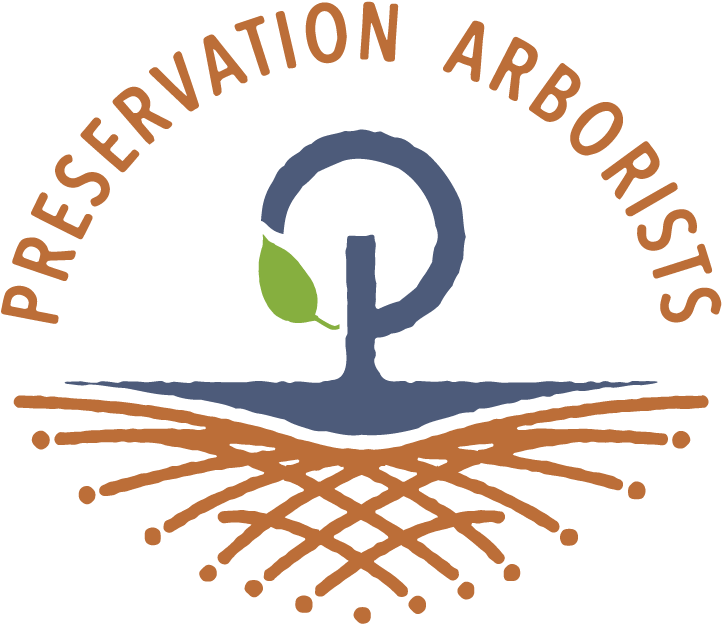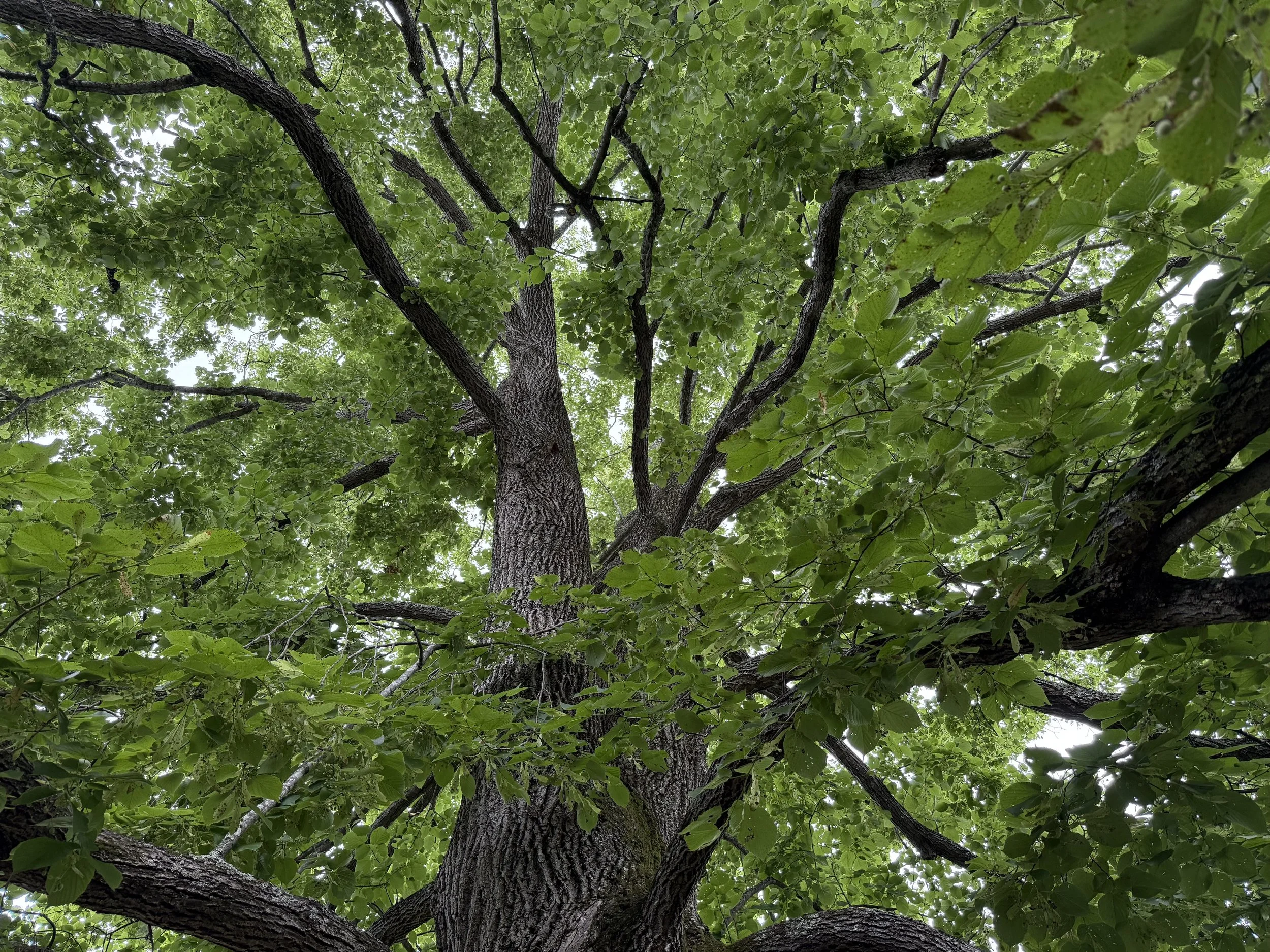Tending the soil to support the best and longest lives for our trees in the Blue Ridge Mountains.
Trees need healthy soil.
Healthy soil for trees means there is carbon to feed the microbiome — the fungi, bacteria, protozoa, archea, and all the rest that are included in a soil’s vast microbial ecosystem — and air for them all to carry out their functions. But soil compaction happens, and when air space is diminished, it leads to a decline in healthy soil life. Soil compaction is the #1 killer of urban trees.
Trees need their root collars above ground.
When a tree’s root collar (where the trunk tissue transitions into root tissue) is buried either by over-mulching, grading, or improper planting, the tree’s vascular system is hindered and over time will be damaged. If the tree goes into the ground like a telephone pole, its root flare is likely buried. Girdling roots, fungal infections, and secondary stressors will damage the tree if its root collar is left buried.
Aligned with responsibility for and love of our planet.
Preservation Arborists of Asheville, NC was founded by arborist Chardin Detrich of Smart Feller Tree Works. In recent years, he has shifted his practice as an arborist, embracing urgent and unfolding research about the soil microbiome where our trees live.
The demand for soil-focused arbor care is growing. This led Chardin, with the collaborative support of Smart Feller Tree Works and the mentorship of Crown, Root, & Soil, to launch Preservation Arborists in order to meet growing demand and foster preservation education in Western North Carolina.
By integrating soil research and focusing on soil and root health, we help preserve urban trees in the Asheville, North Carolina region.
-
Tree Preservation
The benefits of preserving large, mature trees in an urban setting like Asheville is well-documented. The goal of Preservation Arborists is to help Asheville’s mature trees benefit our city far into the future.
Trees need community, just like us! Providing soil space where plant communities and especially baby saplings can thrive is key to a mature tree’s longevity.
Landscaping, renovating, or building? Tree and soil preservation starts before any machinery arrives on a site. We offer tree planning and preservation services for projects that will impact the root zones of trees (and those root zones are way bigger than we usually think they are).
-
Soil Restoration
Soil is living, breathing, sculptural. A single teaspoon of healthy soil can hold up to one billion bacteria, several yards of fungal filaments, and thousands of protozoa and nematodes. This vast network of the soil microbiome provides needed resources like water and minerals to your trees. Ever read about a forest’s myccorhyzal fungi network and how it allows trees to communicate and share nutrients with one another? Those fungi are part of a healthy soil’s microbiome.
Without a healthy microbiome, trees suffer.
Many human activities cause compaction and interrupt nutrient cycling, which damages soils. Preservation Arborists can apply a process to help restore your soils so they can provide resources for your trees to grow into old age.
-
Planting & Transplanting
Planting and transplanting trees correctly is hard. Improper planting is an all too common error, and it may be years before its detrimental effects are visible by the homeowner. Stem-girdling roots, poor site conditions, the wrong tree in the wrong place, over-mulching, and, most importantly, planting the tree too deep (don’t see a root flare? It’s probably too deep) all contribute to a short-lived tree.
Call us to get planting done right. (The future will thank you!)
When transplanting is necessary, we’re here to manage and implement the delicate, root-centered process.
-
Meadow Making
Why turn your grass yard into a meadow? With the combined effects of mowing, fertilizers, and herbicides, lawns emit more carbon than they sequester. Meadows do not. Once established, meadows don't need to be mowed and support our local insect and bird populations. A meadow can also be an edible one!
-
Tiny Forest Planting
Tiny forests, also known as Miyawaki forests, are densely planted areas providing more benefits to your property than fewer trees planted in the same area. This method promotes native plant and soil biodiversity, faster carbon sequestration, and more resilient trees for the years ahead. And, one day, it will give you a sweet spot to chill in a hammock! Read more about Dr. Akira Miyawaki and the development of his planting method.
“Soil might not be as beautiful to the eye as a rainforest or a coral reef, but once you begin to understand it, it is as beautiful to the mind. Upon this understanding our survival might hang.”
— George Monbiot
Sign up to receive infrequent email and snail mail from Chardin.




